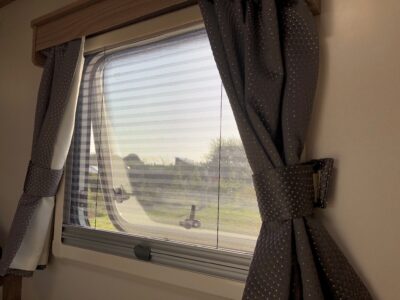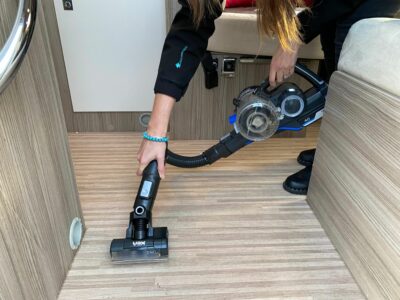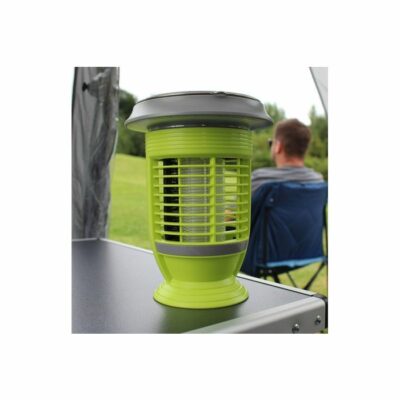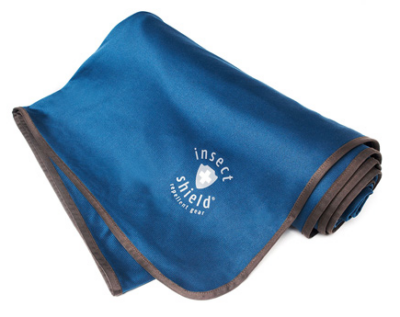Exploring the great outdoors in your caravan or motorhome can also bring along some unwanted little guests, particularly in the warmer months. From pesky midges, ants, wasps and flies in the UK, to mosquitoes when travelling abroad, these tiny bugs can quickly turn your home on wheels into a buzzing annoyance.
Here we look at some tips and products to help you maintain a bug-free environment in your caravan, campervan, or motorhome and keep insects out.

The first thing to consider is where you pitch up your leisure vehicle. It’s no secret that midges, flies, and other bugs are part of the camping lifestyle in summer but it’s worth remembering that they love standing water and long wet grass, so if you can try to find a pitch away from these then you’ll have a head start! Keep the area around your caravan, campervan, or motorhome free from tall grass and debris too, as these can attract insects.
1. Cover entry points
Use wire mesh to cover any potential entry points, like vents, and keep insects out of your caravan or motorhome.
2. Fly screens
If you don’t already have fly screens and mesh on all your doors, windows, and roof lights then they’re definitely worth installing and keeping them closed to prevent insects entering your living space, particularly in the evenings.

If you like to keep your caravan or motorhome door open then a chain fly screen over your door might help to keep flies and midges out.
3. Cover up food
It goes without saying that insects are attracted to food. Store food in airtight containers and avoid leaving food out on works surfaces, or dirty dishes in the sink, to prevent them from becoming a target for hungry bugs!
4. Keep things clean
Regular cleaning is crucial in the battle against insects inside your caravan or motorhome. Clean up any spills or crumbs quickly and regularly sweep and vacuum floors and wipe down surfaces.

Do the same when you get home and put your leisure vehicle back into storage.
5. Use natural deterrents
Several natural remedies can act as effective insect deterrents. Essential oils like citronella, eucalyptus, and lavender are known to repel bugs. Create a mixture of essential oil and water, then spray it around entry points and living areas to create a natural bug barrier.
A citronella diffuser inside your caravan, campervan or motorhome should help to keep bugs away and make it a less attractive place to be.

Outside you could also use insect-repelling sprays, a Buzz Cintronella candle or granules.
6. Use electronic bug zappers
Electric bug zappers, such as Zero In Plug-In Insect Killer or the Outdoor Revolution Lumi-Solar lantern, are a proactive way to eliminate flying insects that might find their way inside your leisure vehicle.

They attract bugs with a UV light and zap them upon contact. Putting zappers near the door or in the lounge area at night will minimise them hovering near the lights in the bedroom before bed.
7. Fly paper
Zero In offers effective fly papers that are easy to hang in your caravan, campervan or motorhome. These sticky fly papers attract and trap flying insects, helping to reduce their presence indoors. They are discreet, simple to use, and can be placed near windows, doors or skylights.
8. Fly spray and insect repellent
Have a spray of any flies who have snuck inside before bed, followed by a quick vacuum and then apply an insect repellent to your skin such as Smidge, Avon Skin So Soft or Jungle Formula should stop any remaining midges and insects nibbling you when you’re in bed!
While moths might not be a huge concern in caravans or motorhomes, for anyone who doesn’t like them and wouldn’t want to attract them, there are moth-repellent hanging rings that can be placed in lockers and wardrobes. They emit a natural fragrance that moths find unappealing, so deterring them from settling in your vehicle.
9. Indoor plants and herbs
If you’re looking for a natural way to tackle bugs, certain indoor plants, such as citronella, basil, mint, and lavender, possess natural insect-repellent properties. Having one or two of these plants strategically around your caravan or motorhome can help keep bugs at bay while adding a touch of greenery to your living space.

Also, when cooking outdoors on the barbecue, or if using a fire pit, using herbs such as sage, rosemary, lemon balm, and mint will help to keep mosquitoes and midges away.
10. Insect-repellent clothing
When ticks, midges and insects are prevalent, it’s important to stay protected when you’re enjoying the outdoors with your caravan and motorhome. From hats, with a net covering over the face and neck, to scarves, socks, T-shirts, and trousers, there are plenty of outdoor brands which make clothing with anti-insect treatment.
Keela has an Insect Shield collection of gear that contains long-lasting repellent treatment to reduce the risk of insect bites. Options include their Machu Trousers which are lightweight, quick drying, and perfect for days out trekking, as well as the Insect Shield T-Shirt, that offers protection from bugs and the sun, providing comfort and functionality.

And their Insect Shield Blanket, treated with repellent will help to keep you protected from insect bites when sitting inside or outside your caravan, campervan or motorhome.

With our armoury of bug-busting gear and top tips, we hope you can keep insects out of your caravan and motorhome and enjoy your adventures without the hassle of those pesky unwelcome guests!
Over to you
Have you got any tips for keeping bugs and insects out of your caravan or motorhome that you’d like to share with other owners? We’d love to read them – simply comment in the box below.


This year we’ve bought a couple ultra sonic insect repellent plugs and a 60 hour defuser with citronella in it, as were off on the euro tunnel for the whole of September. Travelling. We went over for the whole of June and first time ever we had lots of bites, due to very mild winter and damp spring apparently in Luxembourg.
We’ve recently been invaded by ants on a CL. Not too many but they are a nuisance. We’ve found that a natural way to repel them is to spray a with a White Vinegar spray in the bottom lockers cupboards and around vents inthe floor.
Sorry to hear that Philip but thanks for sharing your top tip